AMD Radeon HD 7770 and 7750 Video Card Reviews
AMD Radeon HD 7770

AMD sent over the Radeon HD 7770 1GB GDDR5 video card for us to review
today and we will be taking a closer look at that card on this page. They didn’t send us two for
AMD CrossFire testing, so we’ll have to focus on that at a later date. This card is internally known as the Cape Verde XT.

As you can see from the angle shot above the AMD Radeon HD 7770 has an appearance that is familiar as AMD has stuck with the red/black color scheme. The AMD Radeon HD 6000 series cards had a matte finish on the plastic fan shroud, but for some reason AMD went high-gloss with the 7000 series. At first the high-gloss finish was nice, but then we started to notice finger prints all over the plastic housing.
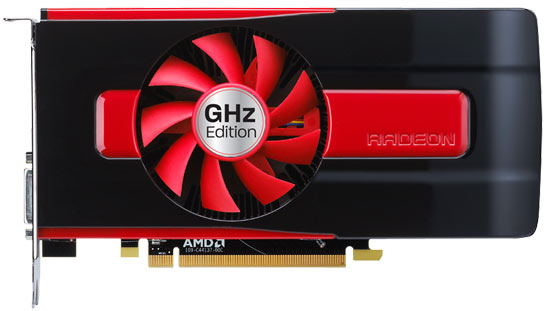
This video card PCB is black and measures 8.25-inches in length. It should be noted that the fan shroud barely protrudes past the PCB making the overall length of the Radeon HD 7770 GHZ Edition to be ~8.3-inches. The height of the card is just shy of 4-inches if you count what sticks out of the PCI Express x16 slot. As you can see from the photo above, the AMD Radeon HD 7770 is a dual-slot card with a single 80mm cooling fan located directly over the GPU.
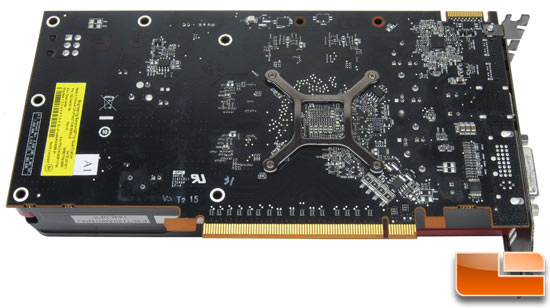
The back of the Radeon HD 7770 is open as the reference card doesn’t feature a back plate. Not too much to talk about back here as none of the 1GB worth of GDDR5 memory chips are visible on this side of the PCB. The only thing worth noting here is the GPU support bracket and mounting holes appear unchanged from previous generations.
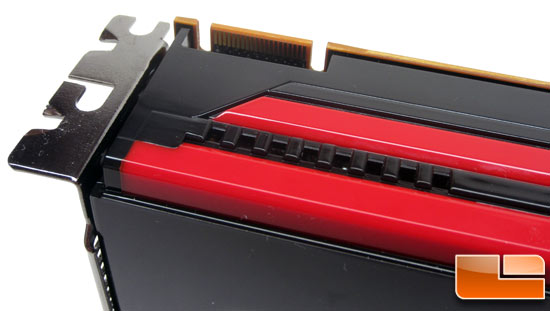
The AMD Radeon 7770 GHz Edition has just one CrossFireX interconnect, so you can only run CrossFire with two cards. Notice that just above the CrossFire interconnects are some black bumps
with some spaced between them. This is actually an air vent for the
GPU cooler and a decent amount of airflow does come out here despite being such a small opening. The AMD Radeon HD 7770 and 7750 do not have the ‘Dual BIOS Toggle Switch’ that is found on some higher end cards.
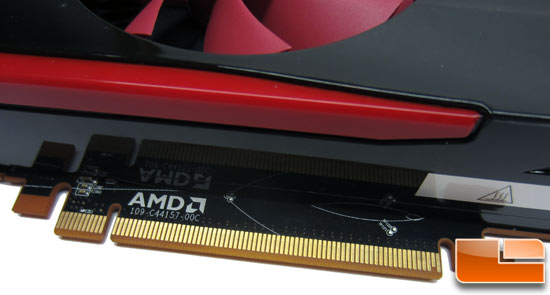
AMD is the first graphics card manufacturer to support the PCI Express 3.0 standard and Radeon HD 7700 series is PCI Express 3.0 enabled. This doesn’t mean much now, but if ultra HD monitors (think 4K resolutions) take off in the years to come it might be beneficial. Notice that the AMD reference PCB model number is 109-C44157-00C.
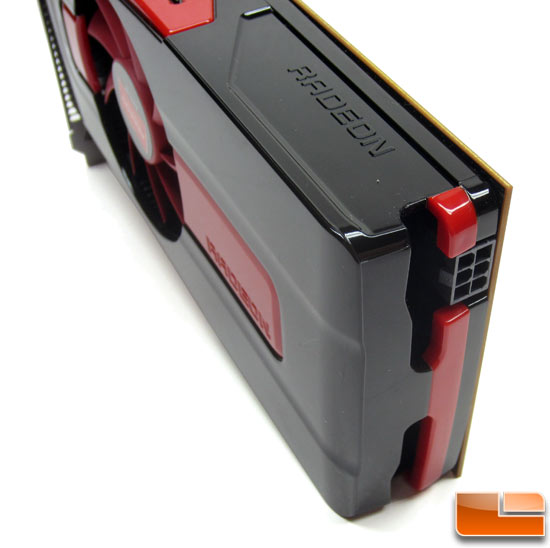
The AMD Radeon HD 7770 has a single 6-pin PCI Express power connector located at the end of the video card next to some air vents. AMD says that a 500W or greater power supply is needed with one 6-pin PCI Express power connector. For those that want to run two Radeon HD 7770 cards in CrossFire you’ll need at least a 600W power supply and two 6-pin PCI Express power connectors.
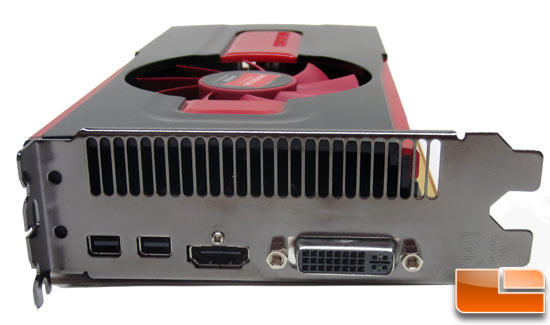
The AMD Radeon HD 7770 has a pair of mini-DisplayPort 1.2 connectors on it that have double the data-rate of DisplayPort 1.1. In addition to the higher data-rate, DP 1.2 also brings support for higher resolution support and support for stereoscopic 3D. The Radeon HD 7770s supports up to six DisplayPort displays by “daisy chaining” them to the two Displayport outputs. To the right of the pair of mini-DisplayPort connectors is a full size HDMI 1.4a output for 3D video (Blu-ray 3D) support and a dual-link DVI-I output. With full support for 3GHz HDMI 1.4a and DisplayPort 1.2 HBR2, the AMD Radeon HD 7770 is set to drive next generation displays at up to 4K resolution.
Notice that AMD did away with having two DVI outputs and by doing so they opened up an entire side of the PCI bracket for exhausting the hot air from the GPU. AMD said that by opening this side of the bracket up and removing the DVI port there that they got two benefits. The first is that the card’s thermal performance improved and the second was that the noise decreased as there is air flow isn’t blocked as badly.

Comments are closed.